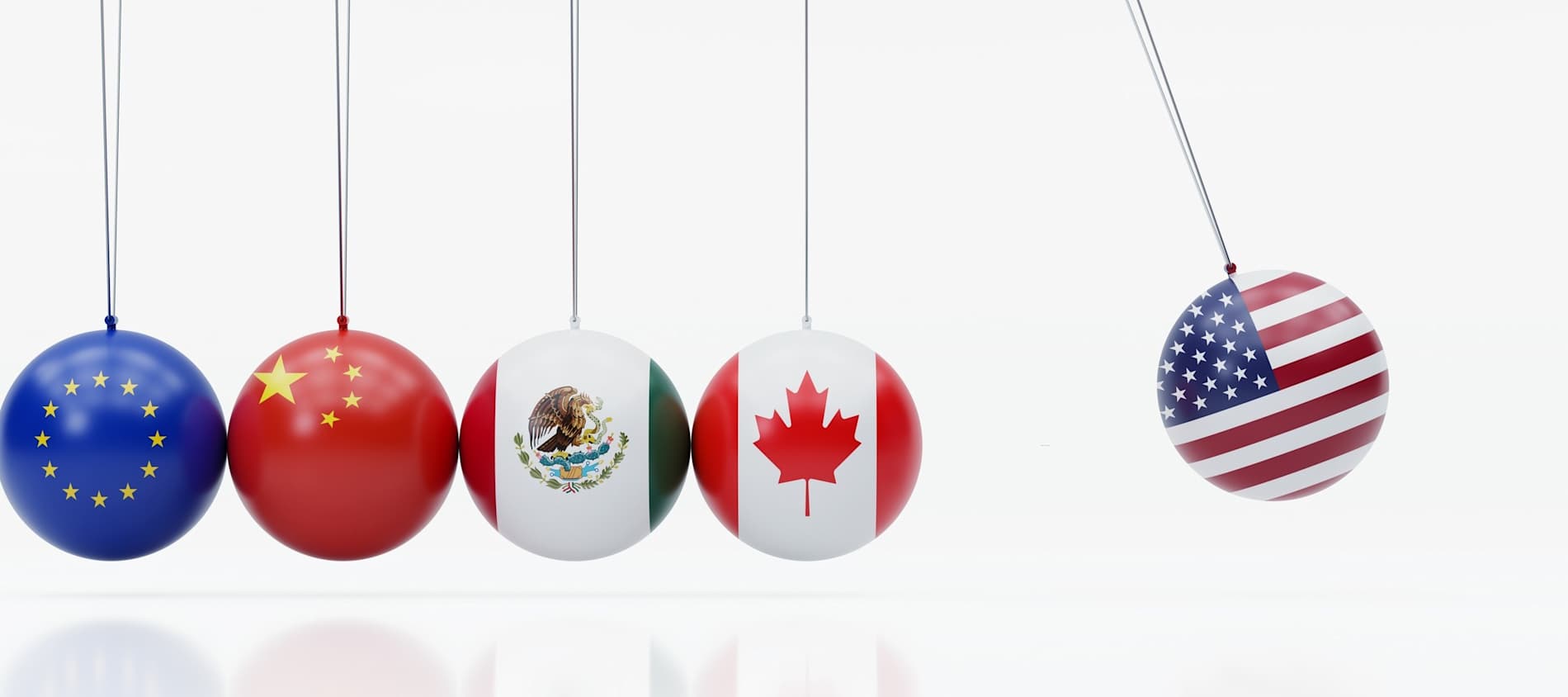Trump’s tariffs: Escalating trade wars, and shifting global trade dynamics
US President Donald Trump’s threats to impose 25% tariffs on Canada and Mexico (now suspended), along with 10% on Chinese imports, represents an escalation of his use of trade policy as weapons of negotiation and coercion.
A continuation of tactics developed during his first term (and left largely intact during Biden’s presidency), it also reinforces the fundamental shift in America’s approach to international trade, and the continued erosion of the post-war multilateral order.
Ironically, the United States played a pivotal role in the establishment of the post-war system of multilateral trade intended to promote global economic recovery, reduce trade barriers, and foster international cooperation.
This system evolved through the General Agreement on Tariffs and Trade (GATT) and its successor, the World Trade Organisation (WTO). When the WTO was established in 1995, American leadership was at the forefront in the push to reduce trade barriers globally.
75 years ago today, 23 countries signed the final act for the General Agreement on Tariffs and Trade (GATT), which from 1948, governed #trade relations amongst signatories and led to the creation of the WTO almost 50 years later. Here is a quick glance at the history of the GATT. pic.twitter.com/xxzh4qkLOx
— WTO (@wto) October 30, 2022
Premised on principles of freer and fair trade, predictability and non-discrimination, the rules-based system was intended to open markets ultimately for the benefit of all, including of course, American exporters, including manufacturing, farmers and service providers.
At the core of the WTO system is the agreement that WTO members work together via negotiation to lower tariffs through binding and transparent means.
Trump’s tariffs represent a clear break with this economic orthodoxy. Indeed, what is particularly striking is how the discourse regarding these tariffs has evolved since his first term.
With the exception of China’s threat to bring a claim against the US at the WTO, there’s notably little discussion of WTO rules or multilateral solutions – a telling indication of how far the international trading system has shifted from its previous foundations.
Indeed, the initial reactions of Mexico, Canada and China to Trump’s new tariffs indicate a change to more combative responses, a marked shift from the more cautious behaviour of states in the firing line during Trump’s first term.

Canada’s swift announcement of retaliatory tariffs on $155 billion of US goods demonstrates a hardened resolve to match force with force. As former Bank of England governor Mark Carney bluntly put it, Canada will “stand up to a bully” with ”dollar for dollar” retaliation.
Mexico and China similarly announced countermeasures, suggesting a willingness to absorb short-term pain to resist US pressure and make a deal to avoid the tariffs’ coming into force.
Most significantly, Trump’s trade policies represent an open abandonment of the rhetoric that international trade should serve mutual benefit.
Trump’s declaration that America will no longer be the “stupid country”, and his dismissal of Canada as ceasing to exist as a “viable country” without US trade, reflect a zero-sum worldview that sees international commerce as a battlefield rather than a foundation for shared prosperity.
BREAKING: "We are not going to be the stupid country any longer, make your products in the USA and there are no tariffs," Donald Trump posted on Truth Social, addressing his recent tariff increases on goods from Mexico, Canada, and China.https://t.co/64YuEgO7gA
— Sky News (@SkyNews) February 2, 2025
📺 Sky 501 / YT pic.twitter.com/C5Ses822Ll
What Trump hopes to gain from his imposition of tariffs, particularly on countries with which the US has had free trade agreements for decades, is anyone’s guess.
National security has been invoked to justify tariffs on steel and aluminium, although these have been called out as clear violations of WTO rules.
Regardless, the multiple justifications offered for the tariffs – from addressing trade deficits to raising revenue to forcing diplomatic concessions – reveal their true nature as negotiating tactics rather than coherent policy solutions.
As one White House official characterised it, this is “a beautiful, beautiful example of promises made, promises kept by President Trump”. Yet the contradictory objectives make it unclear what would constitute success or how trading partners could satisfy US demands.
What is clear, however, is that despite the American consumer likely footing the bill for Trump’s tariffs, the move is an electoral winner.
Tariffs are intended to increase consumption of goods manufactured at home by increasing the price of foreign-produced goods. In the popular mind, however, the imposition of tariffs equals jobs, despite little economic data to support this view.
As Trump tells it, tariffs protect domestic industries, particularly manufacturing and agriculture, from foreign competition. Tariffs on steel, aluminium, and Chinese goods are justified as a means to revive American manufacturing and reduce dependence on imports.
Indeed, the loss of jobs in US manufacturing is widely blamed on the liberalisation of trade. The US trade deficit with China, for instance, is accepted as having cost somewhere around 3.7 million jobs between 2001 and 2018. A populist tool, tariffs are seen as a way to challenge this decline.
The implications of Trump’s trade war extends beyond immediate economic impact. With the threat of additional tariffs on computer chips, pharmaceuticals, and energy products, the world faces the prospect of a dramatically reconfigured trading system.

The relative silence from European trade negotiators, even in the face of threats against NATO allies, suggests a growing recognition that traditional appeals to multilateral norms may no longer be effective.
As the global economy grapples with this new reality, the key question becomes not whether nations will resist US pressure, but how they will reconstruct trading relationships in a world where economic nationalism has replaced multilateral cooperation as the driving force of international commerce.
Trump's tariffs may be just the opening salvo in a broader transformation of global trade.







